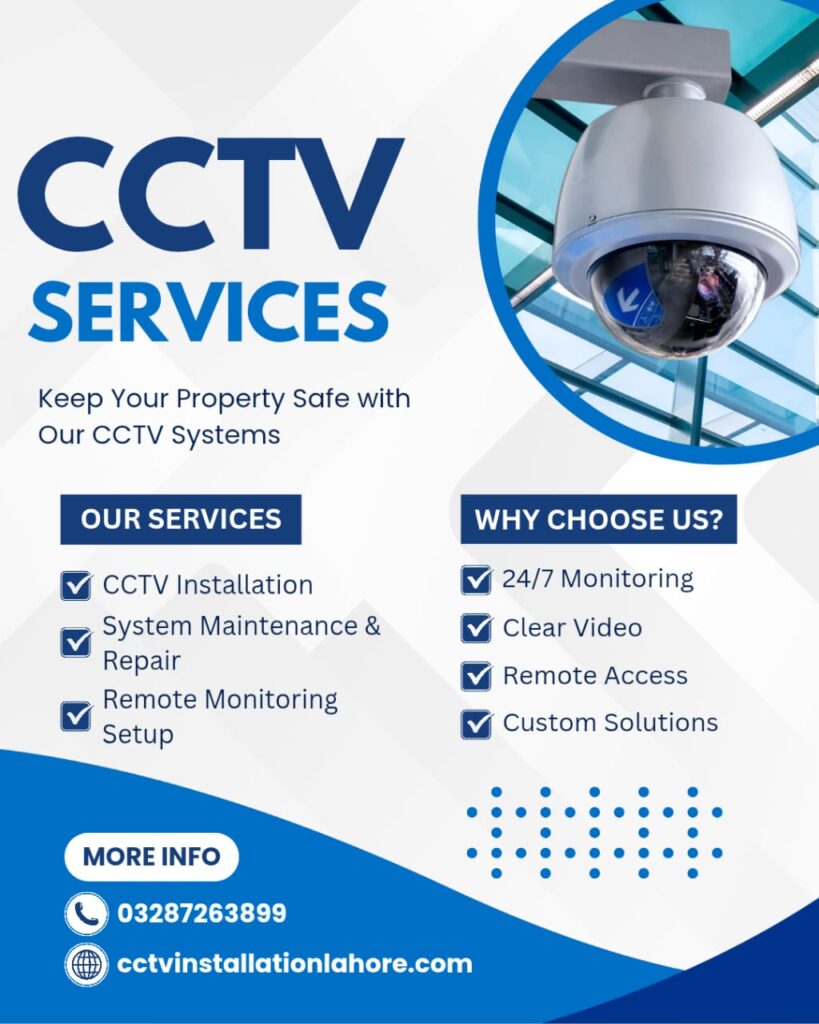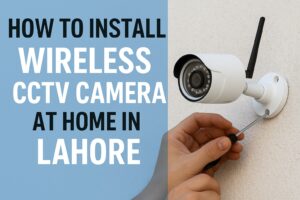In today’s fast-paced world, proving the safety and security of your property has become more important than ever. Whether it’s your home, office, or commercial space, a reliable security system provides peace of mind and acts as a deterrent to potential intruders. One of the most effective ways to secure your premises is through Security Camera Installation. But what exactly is the process, and how can you make sure it’s done right?
Step 1: Assessing Your Security Needs
Before purchasing or installing anything, it’s crucial to understand your security requirements. This involves:
- Identifying vulnerable areas around your property
- Determining the purpose of your cameras (e.g., monitoring entrances, parking lots, or indoor spaces)
- Considering the type of property—residential, commercial, or industrial
A proper assessment ensures that you invest in the right CCTV camera solutions and avoid overspending on unnecessary features.
Step 2: Choosing the Right Equipment
Once your needs are clear, it’s time to choose the right type of cameras and recording devices. Today, there’s a wide variety of options available in the market, including wired, wireless, indoor, and outdoor cameras.
Some important features to consider include:
- Resolution: Higher resolution ensures clearer images.
- Night Vision: Essential for monitoring in low-light conditions.
- Weather Resistance: Important for outdoor cameras.
- Storage Capacity: Decide between DVR and NVR systems.
If you’re looking for the Best CCTV camera in Pakistan, it’s wise to compare brands, features, and prices before making a purchase.
Step 3: Planning Camera Placement
The placement of cameras determines the effectiveness of your system. Poor positioning can create blind spots, while strategic placement maximizes coverage.
Key tips for placement:
- Install cameras at entry and exit points
- Cover main hallways and open spaces
- Keep cameras out of easy reach to prevent tampering
- Use wide-angle lenses for larger areas
Professional installers use a site map to determine optimal placement for your CCTV and security system.
Step 4: Installation of the Cameras and System
With your equipment and placement plan ready, the next step is CCTV camera system installation. This includes:
- Mounting the Cameras – Securely fixing them to walls, ceilings, or poles
- Running the Cables – For wired systems, neatly route cables to avoid damage and ensure a clean look
- Connecting to the Recorder – Link your cameras to a DVR or NVR unit for recording and playback
- Power Supply – Ensure all cameras have a stable power connection
- Network Setup – For remote viewing, connect your system to the internet
If you search for camera installation near me, you’ll likely find local professionals who can handle this step efficiently.
Step 5: Configuring and Testing the System
Once the physical installation is complete, the system must be configured. This involves:
- Adjusting camera angles and focus
- Setting up recording schedules
- Configuring motion detection alerts
- Testing remote viewing features on your phone or computer
Professional CCTV sales and service providers will ensure your system is fully operational and optimized for performance.
Step 6: Maintenance and Support
Your job doesn’t end after installation. Regular maintenance is essential to keep your system functioning effectively.
Maintenance tips:
- Clean camera lenses regularly
- Check cable connections
- Update firmware for your recording devices
- Replace faulty components promptly
For quick assistance, having a reliable CCTV camera shop near me ensures you can get parts and services without delay.
Pricing Package Security Camera Installation
The cost of installing a security system varies depending on factors such as the number of cameras, features, and installation complexity. For example, the CCTV camera price in Pakistan Lahore may range from budget-friendly options to premium models with advanced features. Always compare prices and service quality before making a decision. If you’re planning to invest in a complete CCTV and security system, remember that paying a little extra for quality equipment and expert installation can save you costly repairs and replacements in the future.
Where to Buy and Install
For both purchasing and installation, it’s best to deal with trusted professionals. CCTV Camera Installation Lahore offers expert setup, premium products, and reliable after-sales support, ensuring your property is fully protected.
Conclusion
The process of installing a security camera system involves careful planning, choosing the right equipment, proper placement, professional setup, and ongoing maintenance. Whether you need a simple setup for your home or a comprehensive network for your business, understanding the process ensures you get the most out of your investment.
Frequntly Asked Questions (FAQs)
How long does it take to install a CCTV system?
Most residential setups take 4–6 hours, while commercial installations can take up to two days, depending on complexity.
Can I install a CCTV system myself?
Yes, DIY installation is possible for wireless systems, but professional installation ensures better coverage and system reliability.
Do I need the internet for CCTV cameras to work?
No, but internet access is required for remote viewing and certain smart features.
How many cameras do I need for a standard home?
Most homes require 4–6 cameras to cover entrances, common areas, and vulnerable spots.
What’s the difference between DVR and NVR systems?
DVR works with analog cameras, while NVR is designed for IP cameras and offers better video quality.






